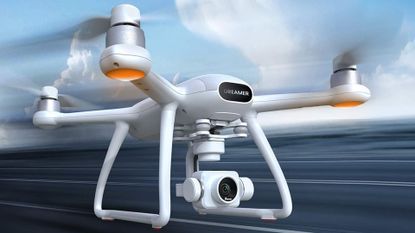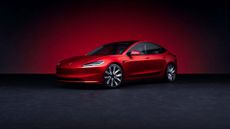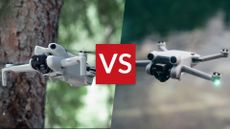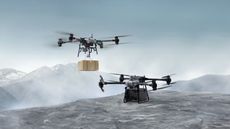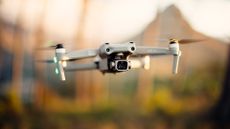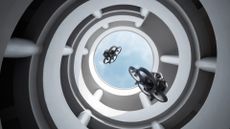Snaptain S5C - Key Specs
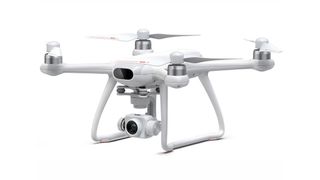
Resolution: 4K/30 (60Mbps) video, 16MP stills Stabilization: Three-axis gimbal, vibration dampeners App support: Yes (Required); Android 9.0+, iOS 9+ GPS: Yes Obstacle avoidance: No Flight time/distance/height: 28 minutes / 2km / 120m Flight speed: 10m/s (8m/s typical) Weight: 820g
Once you’re ready to spend a few hundred dollars on a drone, you’ve likely already turned your eyes toward DJI. That company offers many of the best drones you’ll find, coming equipped with gimbals, powerful cameras, and a healthy dose of intelligence to make for more controller, safer flying. But, DJI isn’t the only company that knows how to make a decent drone. Potensic has a bit of background in the area, and the Potensic Dreamer Pro boasts some worthy features at a price that’s ready to go head-to-head with some of DJI’s cheaper drones.
The Potensic Dreamer Pro costs $489/£329 and offers the kind of capabilities you’d expect at this price, from gimbal-stabilized video and GPS connectivity to long-range FPV control and some intelligent flight controls. The fact that it costs more than a DJI Mini 2 or DJI Mini SE isn’t helping it earn any points, but as we’ll explore, DJI may have some competition yet.
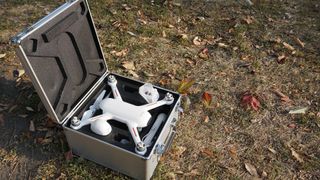
Everything fits into one (rather large) case.
Potensic Dreamer Pro review: design and features
The Potensic Dreamer Pro starts off on a slightly weaker foot when seeing how its design and its capabilities align. The Dreamer Pro has a slightly more dated design with a large, rigid frame; tall, built-on landing struts; and a camera that hangs under the center of the drone. It shares more in style with the older DJI Phantom series than the Mavics, though it’s at least a bit more svelte than the Phantoms.
The rigid frame and large proportions make this drone a little less casual for would-be pilots. It’s not a drone you can simply throw into your pocket or even easily fit into a backpack. It comes with a large, hard carrying case that holds it and all of its accessories at least. The larger size does make it feel like less of a toy, and could be contributing to flight stability, as its heftier 820 grams of weight will be harder for a stiff breeze to move than lighter-weight frames.
On the plus side, the frame feel’s sturdy and well built. Potensic used brushless motors for long-term reliability, and the design of each motor is keyed, ensuring only the correct propellers go onto each arm. The raised height of the drone’s propellers also gives it a bit of clearance if taking off or landing in grass. That last note is slightly balanced out by the drone’s lack of any kind of propeller guards, so it will still require careful, experienced piloting.
The camera system on the Potensic Dreamer Pro is the star of the show. Now, before it gets too much hype, the 16MP, 4K sensor isn’t quite a DSLR camera slapped onto a drone. It’s not taking the most stunning images or video on its own, but the angles enabled by the drone and the stabilization provided by the gimbal do allow for some impressive results. The gimbal not only keeps the camera stable but also provides for remote, motorized control of the camera’s tilt, so it can be adjusted mid-flight. There’s a microSD card slot built into the camera for storage.
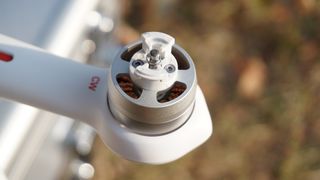
The keyed motors stop you placing the wrong propeller on each one.
The drone’s controller is a well-designed unit that feels good in the hands. The thumbsticks offer recent resistance for nuanced control, and there’s a compartment to keep the sticks themselves slotted away when not in use. It does require a connected phone to use, but the controller has a large, adjustable slot for holding a phone in position and uses a USB-C, micro USB or Lightning connection to pair with the phone and provide a much stronger link between the drone and phone than a direct Wi-Fi connection between the two.
The controller has a lot of controls readily accessible, from flight and takeoff controls to a camera shutter, a video record button, a brightness dial and gimbal control. The phone connected to the remote can provide even more control, enabling smart flight navigation, providing a first-person view, displaying GPS location and showing telemetry data.
The Potensic Dreamer Pro runs on a beefy battery that’s integrated into the design of the drone, slotting into the back easily and locking into place. It can offer up to 28 minutes of run time. Though the package only includes one battery, they can be purchased separately, and swapping batteries is a quick and easy operation.
In the US, the drone will require registration with the FAA to fly. Perhaps more importantly for those planning ahead, the drone doesn’t feature the newly implemented Remote ID technology. So, after September 16, 2023, pilots will need to either fly within specifically established areas or retrofit their drone with an after-market Remote ID module — availability of which may not be guaranteed. This is a barrier all drones will face in the future, though.
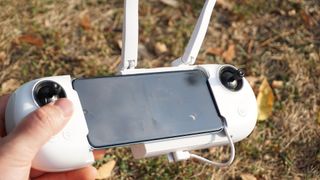
The controller requires a phone to be attached.
Potensic Dreamer Pro review: flight performance
The Potensic Dreamer Pro isn’t an elite flier, but it is quite capable. The first thing helping it provide a reliable flight experience is its GPS lock. With a good signal for GPS, the drone managed to hold itself steady reasonably well on a horizontal axis, though it shifts up and down a bit more. In high wind, it does struggle a bit more to stay put, but I haven’t seen it drift more than a couple feet.
The drone can get pretty zippy with a max flying speed of 10m/s. It doesn’t feel like I’m flying a little tank around, even if it looks more tanky than the DJI Mini drones it's directly competing with. It takes a second to get up to speed, and the inverse is true as well, it takes a second to come to a stop. This momentum can make some flight maneuvers a little tricky, and I’ve had some close calls with branches as a result.
The general stability does help a bit with more nuanced control, and I was able to reliably perform a manual landing on the carrying case the drone comes in, which doesn’t provide much room for error. But, with a bit of wind, this would be a risky move. Flying low to the ground is also a dubious move, as the drone often shifts up and down a bit while in flight.
The limitations of the drone are largely going to be irrelevant on account of flying restrictions. The 2km signal transmission range is liable to see the drone flying completely out of view of the pilot, and the altitude limit of 120m is about as high as a drone pilot can legally go. Potensic’s app does allow a pilot to dial back some things, like limiting the distance and height the drone can go.
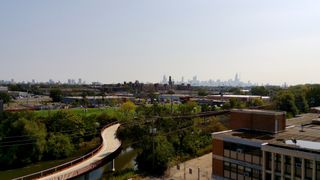
Still from a video taken by the Dreamer Pro
Potensic Dreamer Pro review: camera and app performance
Between the flight capabilities of the drone and the decent quality of the camera, the Potensic Dreamer Pro provides a strong shooting experience for hobbyist pilots on a budget.
The stabilization on the camera thanks to its gimbal and vibration dampeners is rock solid. No matter how fast or erratic I flew the drone, I couldn’t get the camera to end up with shaky footage. It makes for smooth shots in motion. The steadiness of the drone itself can cut down on the stability of the shot, though, as the drone’s slight shifts in the air create more of a hand-held feel to some of the shots. That’s all but erased when flying high up and focusing on far off subjects, as the small movements of the drone are less pronounced in that kind of footage.
The ability to adjust the camera angle mid-flight is handy for taking more advanced shots, like a fly over. Unfortunately, the brightness can only be adjusted between recordings, so the camera doesn’t capture well if the lighting changes dramatically over the course of a recording.
The resolution is plenty sharp at 4K and 16MP for stills. It can feel a little oversharpened, but the result is still images and video worthy of sharing, especially considering the drone can simply go and see things you can’t with a handheld camera.
There’s one big downside to the app and camera pairing, though. For whatever reason, the app doesn’t allow reviewing captured content stored on the drone, so there’s no handy way to check that you got the shot you were aiming for in the field without bringing along a device that can read the microSD card you’ve captured to.

Potensic Dreamer Pro review: verdict
The Potensic Dreamer Pro is a capable drone that won’t leave most novice pilots wanting for much. Its camera is capable of capturing some great shots, and the drone doesn’t struggle to get a good angle. Potensic’s pricing does put it in a difficult spot, though. DJI has cheaper drones that are largely just as capable while shooting 2.7K video instead, or the DJI Mini 2, which bumps up to 4K. For those who prefer something a bit bigger and easier to see at a distance, the Potensic Dreamer Pro will likely fit the bill, but the DJI Mini 2 is probably the better choice for most people.
